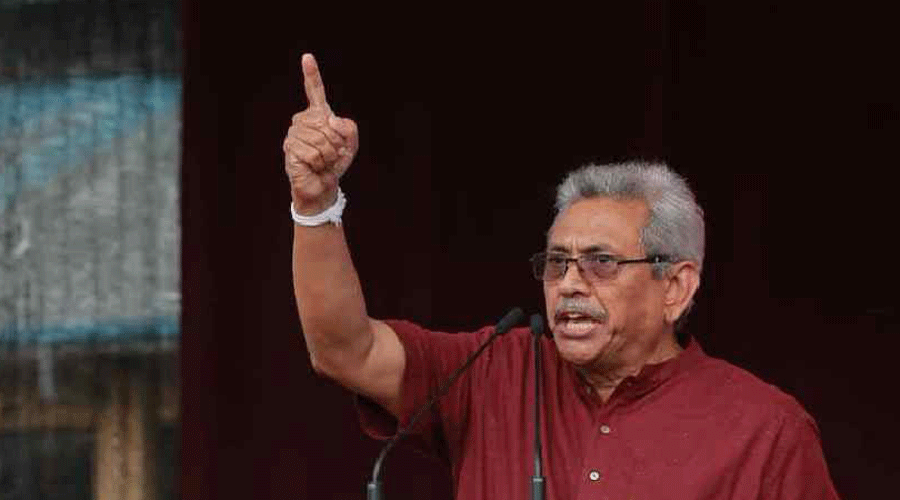Colombo's Galle Face, the epicentre of protests in economic and political crisis hit Sri Lanka, was also the venue of the Satyagraha by the Tamil people over 60 years ago to seek equal importance, which resulted in them being violently attacked by elements toeing majoritarianism.
The Tamils' protests, following the 'Sinhala Only Bill' by the Bandaranaike regime on June 5, 1956 saw participants at the Galle Face becoming target of violent attack by goons sympathetic to the then ruling establishment and those who subscribed to politics of hegemony and ethnicity, said S C Chandrahasan.
Founder of Organisation for Eelam Refugees Rehabilitation (OfERR), Chandrahasan, is the son of SJV Chelvanayakam (1898-1977), the iconic leader of Tamils of Sri Lanka who fought all his life for the rights of the ethnic minority through Gandhian means. Chelvanayakam is revered as 'Thanthai Chelva' (Father Chelva) by Lankan Tamils.
Led by his father, who was the leader of the Tamil party, 'Ilankai Tamil Arasu Katchi', the protesters gathered at the Galle Face beachfront in 1956 following the Sinhala Only initiative, he said.
They were Sathyagrahis who were peacefully protesting seeking equal rights for the Tamil people and equal importance for the Tamil language.
"But, what happened was terrible and painful. Satyagrahis were targeted by violent mobs sympathetic to the Bandaranaike regime. The participants were beaten up and they were severely injured," Chandrahasan told PTI.
An outfit had also organised a massive march to the Parliament on the very same day of protests seeking deletion of the 'reasonable use of Tamil' clause in the Bill.
The participants of the march targeted the Satyagrahis and they were beaten up and sustained severe injuries. "Though there were sufficient policemen on duty, they remained mute spectators. Some of the Satyagrahis were also pushed into a lake near the Parliament House. It was the first major brutal attack on Tamils in independent Sri Lanka, then known as Ceylon," he said.
The attack at Galle Face was just the beginning and it spread everywhere soon and Tamils became the targets.
"Rioting, arson and looting became the order of the day and Tamils were the target. Tamils, be it Indian origin or the Srilankan Tamils, all were attacked everywhere for staging a protest seeking equal importance to the Tamil language.
Violence became a normal, acceptable tool for advocates of Sinhala majoritarianism to intimidate the Tamil people," 81-year old Chandrahasan said.
The back-to-back riots in 1956 was the first major, organised attack against the Tamil people in Sri Lanka, in which over 100 innocent Tamil civilians were killed, Chandrahasan said. "Painfully, the 1956 riots following the Galle Face protest was just the beginning of decades-long attack against the Tamil people," he said.
A staunch pacifist, Chandrahasan said it took decades to nudge the government to accept the request to confer equal right on the Tamil language. "Following the struggle, Tamil also became an official language. The (Sri Lankan) Constitution says that the official language of Sri Lanka shall be Sinhala. It says that Tamil shall also be an official language (made through an amendment)."
The Lankan Constitution declares that the national languages of Sri Lanka shall be Sinhala and Tamil.
Chandrahasan, who has for decades facilitated the return of Lankan Tamil refugees from India to their homeland said, "for now we have put our work to facilitate the return of Tamil refugees on hold in view of the current crisis in Sri Lanka. The crisis has now changed the scenario. Now Tamil people are coming to India (Tamil Nadu)."
It may be recalled that so far, 112 Tamils have come to Tamil Nadu and one of them has died and others are housed in Ramanathapuram District in southern Tamil Nadu.












